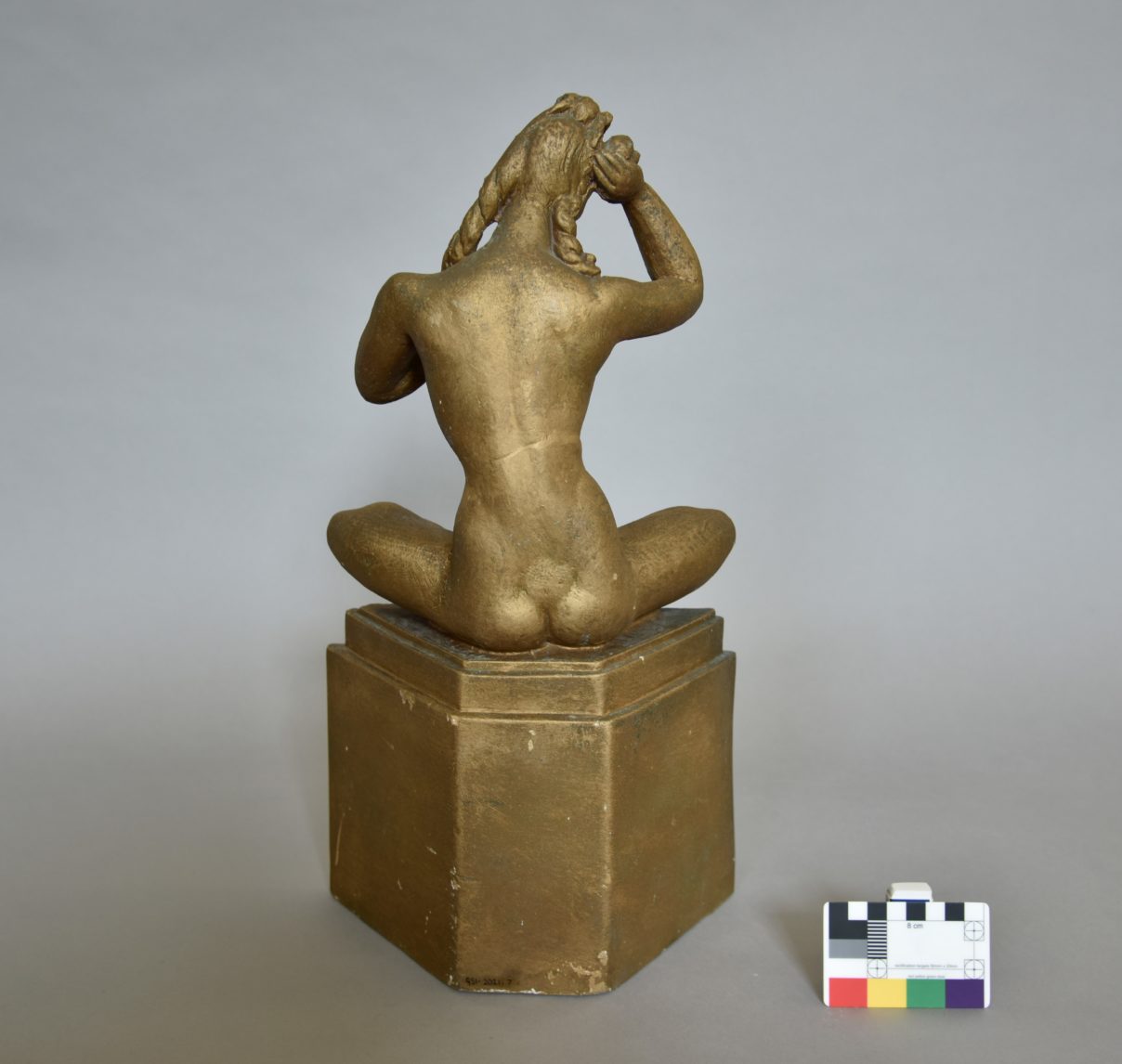Gold Statue
Object

The object is a small golden statue of a poised woman on a trapezoidal base. The woman sits cross-legged with both arms reaching up to touch her curly hair. The object is made from plaster and is a replica of Dora Gordine’s Crowning Glory, which was originally in bronze. The original statue appears to have been commissioned in 1948 by Eugene Ltd, who were early manufacturers of a permanent wave kit. The object now sits on display in the window of the 1950’s hair salon at Beamish Museum.

The Eugene Ltd company was based in Edgware Road in London, but its magazine, The Eugène Waver, contained handy advice and instructions for career hairdressers across the country, keeping them abreast of all the latest Eugène products, styling techniques and hairdressing trends. As women in the 1920’s and 30’s began to reject the clothing and hairstyles of their grandmothers, they began to adopt much shorter, more practical, bobbed haircuts instead. Often these would be elaborately styled and permed. This new techniques and equipment were soon being developed to best achieve this new look of curls and finger waves. At the cutting edge of this field of hairdressing innovation was Eugène F. Suter, who developed his own special “Eugene method” and technology to achieve the popular styles of this era (vam.ac.uk).
Dora Gordine was an Estonian Jewish Modernist figurative and portraitist sculptor. Her early career was influenced by the Noor Eesti (‘Young Estonia’) group of artists who favoured Art Nouveau. She moved to Paris and on her third marriage to Hon.Richard Hare, her career expanded to the extent that some critics regarded her as amongst the finest sculptors of her generation. She specialized in portrait sculptures attracting international admirers from the: political, social, artistic, literary and theatrical worlds. Her legacy also includes a number of public space pieces. Her latter career was not as prolific or as fêted and Gordine was relatively unknown at the time of her death. Major exhibitions in London in 2006 and 2009 have revived her standing and her former home is now a museum (tate.org.uk).
Condition
- Evidence of dirt on the surface of the statue
- Several paint splatters on the surface of the plaque
- Small areas of surface material loss on the proper right forearm, the proper right thigh, and the proper left upper corner of the base.
Conservation

The statue was gently cleaned using a soft bristled brush in order to remove surface dirt. For the more ingrained surface dirt a combination of smokesponge and eraser were used for the surface, while a bamboo skewer was employed to dislodge thicker layers of dirt as it would not damage the surface of the statue.
As the plaque on the front was made of plastic, wet cleaning with anything other than deionised water couldn’t be considered as it might damage the surface. As such, the paint splatters were removed mechanically using a bamboo skewer as this did not scratch the plastic. The surface was then surface cleaned using a barely dampened swab of deionised water and immediately dried with a microfibre cloth.

As there were a few areas of surface material loss, and the object was to go on display at Beamish, the decision was made to fill the areas and colour match them. Flugger, an acrylic putty, was applied to the areas of missing surface material and allowed to cure. It was then levelled off mechanically so the fill sat in line with the original surface and was sanded smooth using fine grade sandpaper. Acrylic paints were then used to colour match the fills to the original colour of the statue.
